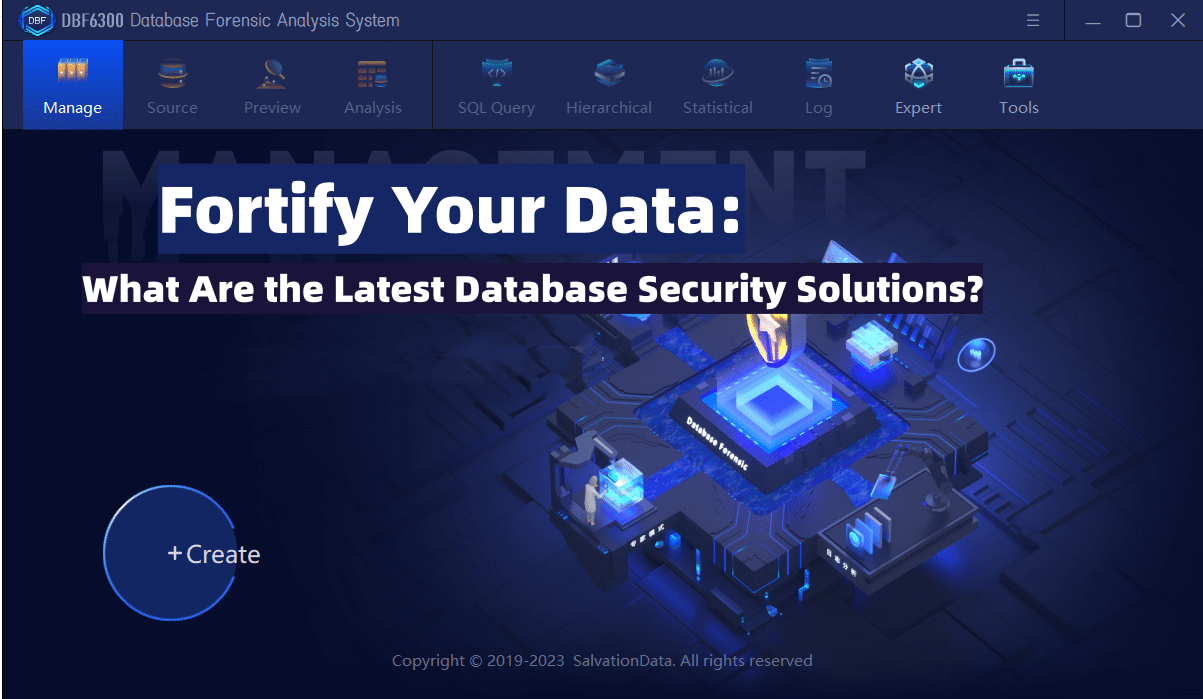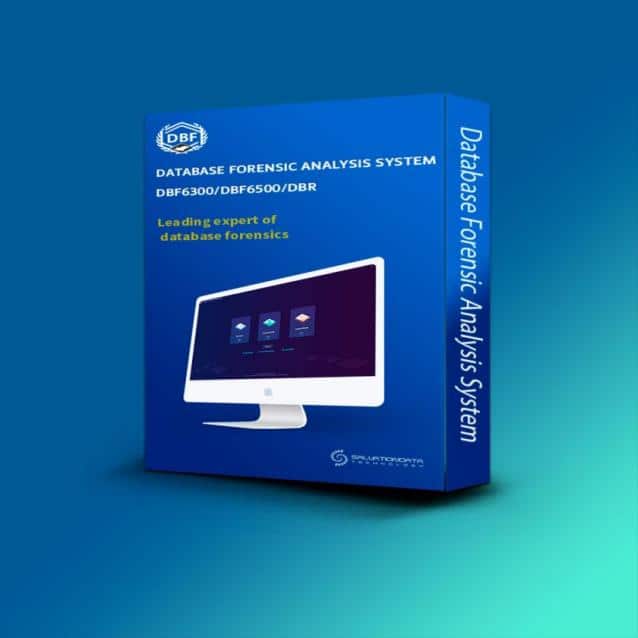What Are the Latest Database Security Solutions?

-
Content
- Introduction
- Latest Database Security Solutions
- Database Security Best Practices
- Key Components of Modern Database Security Solutions
- Successful Implementations of Database Security
- Conclusion
-
Content
- Introduction
- Latest Database Security Solutions
- Database Security Best Practices
- Key Components of Modern Database Security Solutions
- Successful Implementations of Database Security
- Conclusion
Introduction
Strong database security solutions are essential in the digital forensics, when data breaches are not only possible but also a given. All organizations, regardless of size or industry, handle confidential information that, in the event of a breach, might have disastrous consequences. Safeguarding this data is essential for maintaining operational integrity and building confidence, not only for legal compliance reasons.
Because cyber threats are always changing, protecting sensitive data requires defenses that are both dynamic and adaptable. In order to protect data from various risks, database security solutions are crucial. These remedies include various methods and tools designed to stop illegal entry, improper usage, or database corruption. Advanced security measures must be included as cyber attacks become more sophisticated. Through this integration, an organization’s infrastructures supporting vital business operations are secured in addition to its information assets.
In an increasingly connected world where data breaches are common and sophisticated, this introduction lays the groundwork for an in-depth study of the most recent developments in database security solutions.
Latest Database Security Solutions
1. Understanding Common Threats
Hacker assaults and insider threats are the front-runners in the ongoing siege of the digital stronghold containing our data. To exploit vulnerabilities, cyber criminals use a variety of strategies, including as phishing, ransomware, and SQL injection. Conversely, insider threats are extremely difficult to identify and neutralize as they originate from inside the company, whether intentionally or unintentionally. The aforementioned hazards highlight the need of all-encompassing database security measures that safeguard against external as well as internal threats
2. The Imperative for Innovation
Our defenses must adapt as cyber techniques do. Not only is it advantageous, but ongoing innovation in database security solutions is also required. It takes constant study and adjustment of the newest security systems to stay ahead of sophisticated cyber attacks. This proactive strategy makes sure that the countermeasures are as adaptable as the dangers they are meant to neutralize.
3. Advancements and Emerging Trends
The latest developments in database security, powered by AI and machine learning, are encouraging. These innovations improve the capacity to anticipate and thwart assaults, providing a more intelligent security posture as opposed to just a more robust one. Furthermore, the use of blockchain technology adds another degree of protection by means of decentralized data management, which considerably increases the difficulty of data manipulation and fraud. Using database forensics tools to conduct in-depth investigations after a security incident is another new trend. Understanding how breaches happen and averting such situations in the future are made possible by these technologies.
Modern database security solutions are built on these breakthroughs, which provide organizations the means to safeguard their most important assets in an increasingly dangerous digital environment.
Database Security Best Practices
1. Adhering to Industry Standards
Effective database security depends on putting industry-standard best practices into action. The least privilege concept is one essential strategy that makes sure database access privileges are kept to a minimum and only allow users to execute their jobs. Databases that are routinely updated and patched may also help ward against security holes that an attacker might exploit.
An further crucial security step is the encryption of data while it is in transit and at rest. It safeguards information by rendering it unintelligible to anybody without the proper decryption keys. It is also necessary to set up thorough monitoring systems and audit trails. Both the detection of possible security breaches and the provision of forensic tools for investigating and reacting to such breaches are provided by these systems.
2. Key Considerations for Robust Security
Database security methods must take the variety and complexity of potential attacks into account. By implementing multi-factor authentication (MFA), we may strengthen security measures and decrease the likelihood of unauthorized access caused by compromised credentials. This is achieved by demanding various forms of verification before access is given.
Data security services should include regular security assessments and vulnerability scans to identify and mitigate risks promptly. Incorporating database analysis and segmentation can further protect sensitive information by isolating it from other network segments, minimizing the potential impact of a breach.
Another consideration is the integration of digital forensics tools. These tools can be pivotal in the quick identification and remediation of security incidents, ensuring minimal damage and facilitating a swift recovery.
3. Emerging Practices
The field of database security is continually evolving, influenced by technological advancements and changing threat landscapes. Practices such as cloud database security and recovery database network solutions are becoming more prevalent, offering scalable and flexible options to enhance traditional security measures. Adopting these emerging practices can provide additional layers of security and help maintain the integrity and availability of database resources in a complex and threat-prone digital environment.
Key Components of Modern Database Security Solutions
1. Encryption and Data Masking: Essential Defenses
The strong usage of encryption methods is a foundational component of contemporary database security solutions. Last but not least, encryption makes sure that data is safe and unreadable by outsiders even if there is a data breach. This method protects sensitive information from being intercepted or exposed, and it works for both data that is at rest and data that is in transit.
Data masking technology is a useful tool that works in conjunction with encryption to generate a similar-looking but fake version of data for testing and development. By ensuring that the real sensitive data is not exposed to any internal risks or breaches during the development phase, this strategy guarantees that the functional use of data is feasible.
2. Advanced Authentication and Access Control
Databases must be protected from unwanted access with the help of access control measures. These approaches extend beyond conventional passwords with complex authentication procedures. To dramatically lower the danger of unauthorized access owing to compromised credentials, multi-factor authentication (MFA) requires users to show two or more verification factors.
Role-based access control (RBAC) is an additional crucial element that guarantees users have authorized access to just the data required for their respective jobs in the organization. This lowers the attack surface for external attacks and lessens the potential harm from insider threats.
3. Network-Level Security Enhancements
Another line of protection may be put in place by installing security measures at the network level, such intrusion detection systems (IDS) and firewalls. In order to prevent assaults from accessing the database, these systems keep an eye on all network traffic, both incoming and outgoing, and manage it according to established security standards.
Additionally, SQL database recovery protocols and tools should be in place to quickly restore data integrity and availability in the event of data corruption or loss. This readiness ensures continuous data availability and business continuity, critical components of modern database security solutions.
Successful Implementations of Database Security
Case 1: Major Financial Institution Implements Encryption
A leading financial institution faced significant risks from both external cyber threats and internal vulnerabilities. To enhance their database security, they implemented comprehensive data encryption both at rest and in transit. This measure ensured that sensitive customer financial data, such as credit card details and personal identification numbers, remained protected. As a result, the institution has reported a marked decrease in data breaches, with no successful database attacks reported since the implementation.
Case 2: Healthcare Provider Uses Advanced Access Control
To safeguard patient data, a healthcare provider’s database systems were equipped with multi-factor authentication and role-based access control (RBAC). Adhering to healthcare rules and preventing data breaches were made possible in large part by this programme. Because only authorized individuals could access critical information according to their respective duties, the likelihood of insider threats was greatly reduced by the access control methods. Since these steps were implemented, the supplier has seen a 75% decrease in efforts by unauthorized users to get access.
Case 3: DBF-Database Forensics Analysis System by SalvationDATA
The DBF-Database Forensics Analysis System, developed by SalvationDATA, is a powerful illustration of cutting-edge digital forensics. The system’s features for thorough investigations and corrupt database recovery are part of its design for analyzing and securing databases after events. By decreasing downtime and the likelihood of repeat breaches, it aids organizations in rapidly determining the extent and mode of an assault. One government agency that successfully utilized the DBF system to discover and fix vulnerabilities after a sophisticated cyber-attack is worth mentioning. This helped to ensure that crucial public data remained intact.
Analyzing the Impact of These Security Measures
Here we see how present database security solutions work in action via these case studies. A healthcare provider’s access control systems guarantee compliance and security, while an encryption system at a banking institution protects vital data from sophisticated cyber attacks. Reactive and proactive capabilities are provided by SalvationDATA’s forensic tools to deal with risks post-breach, emphasizing the significance of preparedness and responsiveness in database security.
The use of cutting-edge database security solutions and technologies not only safeguards information but also fosters confidence with customers and stakeholders, demonstrating the need and benefit of proactive security investment.
Conclusion
In today’s data-driven world, the importance of robust database security solutions cannot be overstated. As we have explored, protecting sensitive information against a variety of threats requires a comprehensive approach that includes advanced encryption, data masking, sophisticated access controls, and continuous innovation in security practices.
These security measures are both necessary and effective, as shown by the featured case studies. Investment in sophisticated database security solutions is becoming more and more recognized across industries as an essential component of corporate integrity that safeguards clients and earns confidence. This is true in healthcare as well as in financial services.
Defenses need to be updated in response to evolving threats. To protect data from the next wave of cyber attacks, it is essential to consistently implement database security best practices and new technology. Businesses may protect their most important assets and be ready for any threats by combining proactive and reactive security measures.
Ultimately, achieving safe databases is a continuous and ever-changing process. In today’s uncertain digital world, this is a must-do for any company that values data security.





